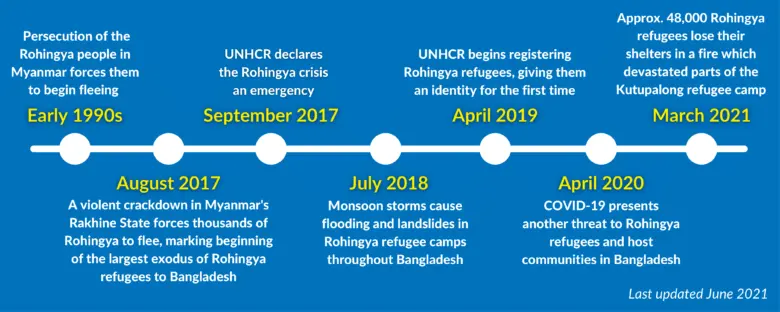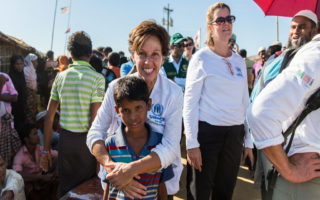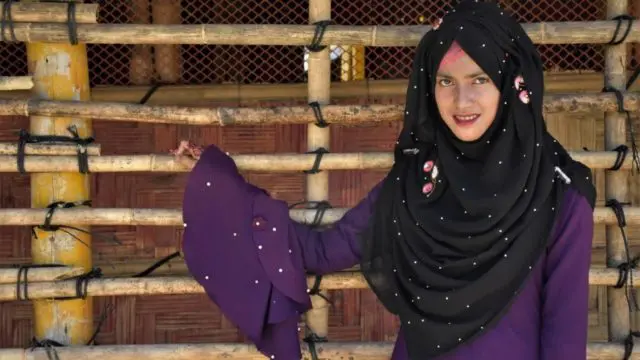
Rohingya refugees in Bangladesh after a monsoon in 2019. © UNHCR
Each year, monsoon rains and heavy winds pose a severe threat to Rohingya refugees that can potentially worsen the Rohingya refugee crisis. Here’s everything you need to know about how UNHCR is preparing for monsoon season in Bangladesh.
Every year between May and September, monsoons wreak havoc on settlements in Bangladesh where Rohingya refugees live. After fleeing Myanmar because of the violence and persecution they face, Rohingya refugees must face harsh weather which threatens their lives and shelters. Learn more about who Rohingya refugees are, what monsoon season is, and how UNHCR, the UN Refugee Agency, is helping. To stay informed about the Rohingya refugee crisis, sign up to our mailing list.
Who are Rohingya Refugees?
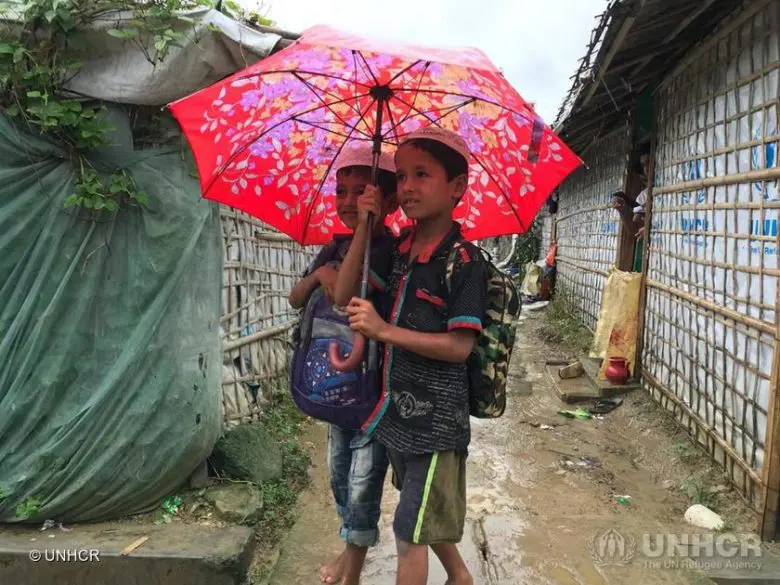
Following heavy monsoon rains, humanitarian agencies have been distributing shelter kits, hot meals and high-energy biscuits to affected families in Rohingya refugee camps and host communities in the area of Cox’s Bazar. © UNHCR
The Rohingya are a Muslim ethnic minority in Myanmar and the largest identified stateless community in the world. After violence in Myanmar began in the early 1990s, more than a million Rohingya refugees fled the country in waves of displacement. The latest exodus began on August 25, 2017, where hundreds of thousands of Rohingya fled Myanmar’s Rakhine State to seek refuge in Bangladesh. Of those who have fled, a vast majority of them are women and children – 40 per cent are under the age of 12.
Most Rohingya families have crossed the border into Bangladesh. There, they often end up in the refugee settlements of Nayapara or Kutupalong in Cox’s Bazar which are overcrowded, lacking adequate shelter, water and sanitation. Often, these camps suffer from landslides and flooding during monsoon season.
There are currently almost one million Rohingya refugees, mostly in Bangladesh, India and Malaysia. Over 884,000 Rohingya refugees live in Cox’s Bazar district.

© UNHCR/Roger Arnold
Hajira and her three-month-old daughter Sadeka were among the Rohingya refugees who fled Myanmar after the exodus began. They have now found safety in UNHCR’s Transit Centre in Bangladesh’s Kutupalong camp.
Timeline of the Rohingya Refugee Crisis
August 25, 2017 marked the beginning of the largest exodus of Rohingya refugees in history, though the persecution of their community began much earlier. Learn more about the history of the Rohingya refugee crisis and what has happened in recent years.
What is Monsoon Season?
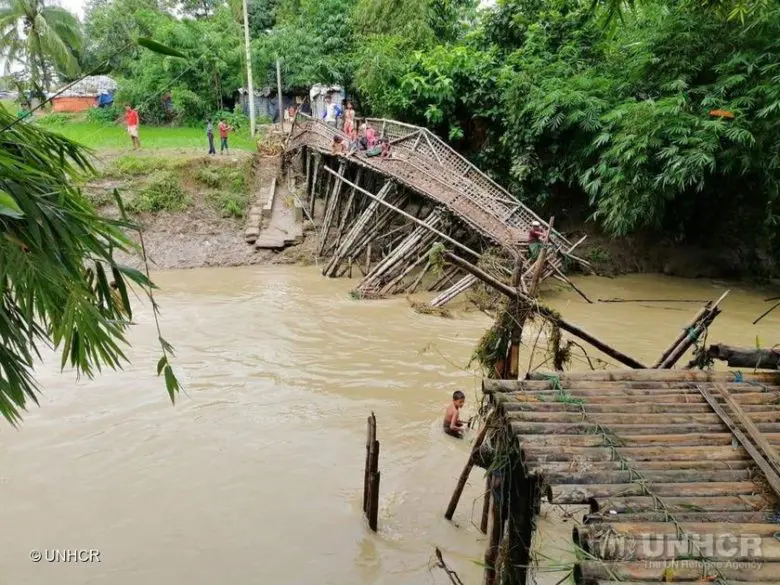
A collapsed bridge in Bangladesh. © UNHCR
From May to October each year, monsoon season brings torrential storms – along with strong winds – that include 80 per cent of the annual rainfall. The season presents a severe threat and additional challenges that Rohingya refugees must face, including flooding and landslides. The extreme weather, coupled with makeshift shelters and steep slopes, can result in injuries. The rainy season brings heightened risk of disease which can also cause illness among the families.
Unfortunately, climate change has only exacerbated the threat posed by monsoon season. Bangladesh, where more than 880,000 Rohingya refugees live, has always been prone to tropical storms and is one of five countries that has been most affected by climatic disasters worldwide over the past three decades.
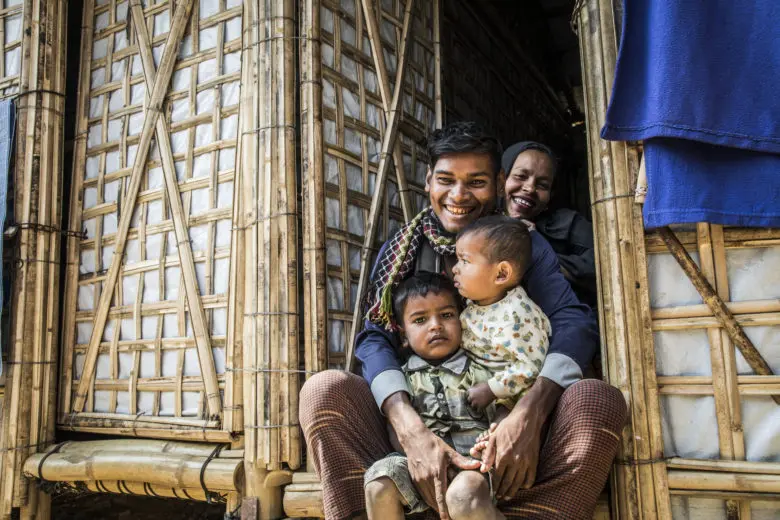
Abul and his family. © UNHCR/Vincent Tremeau
Abul Kalam and Rahima Khatun are Rohingya refugee parents living in Bangladesh with their two young sons. Along with hundreds of thousands of others, they fled Myanmar in August 2017. Though they found safety in Bangladesh, Abul and Rahima’s family still has to face considerable challenges – environmental degradation, lack of infrastructure and life-threatening weather during monsoon season.
“Our biggest challenge used to be the shelter where we lived. During the monsoon, whenever it rained, the floor got very wet and turned to mud,” says Rahima. “There were insects and it was very unhealthy. It made our children sick.”
DONATE TO SUPPORT ROHINGYA REFUGEES
UNHCR’s Monsoon Response
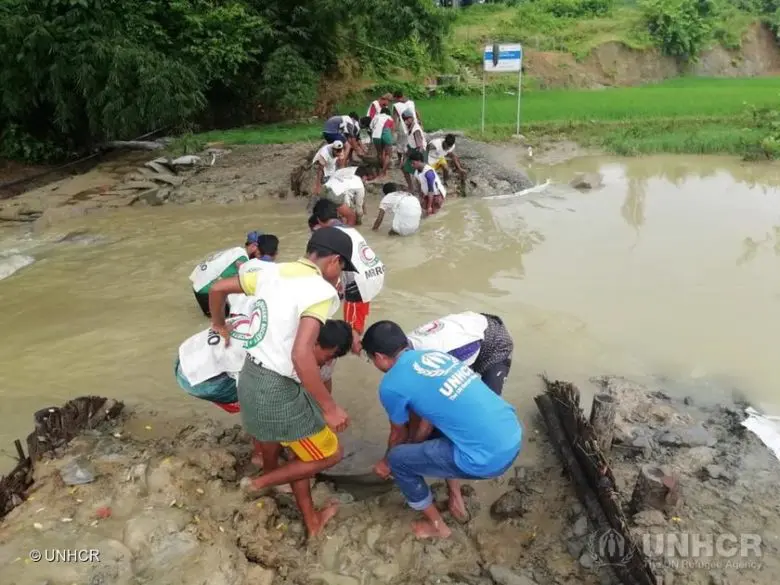
Volunteers in Bangladesh help the community after a monsoon. © UNHCR
Together with its partners, the Rohingya community and host communities, UNHCR has worked to prepare for and respond to the extreme weather presented by monsoon season. Emergency preparedness is a key pillar of UNHCR’s approach and, together with Bangladesh – a world leader in disaster risk reduction and emergency preparedness – local and refugee response volunteers have been mobilized during emergencies.
The role that Rohingya and Bangladeshi volunteers play is critical. They are trained by UNHCR and our partners, serving as first responders to assist affected families, raise awareness and share information. Community groups also provide practical assistance to families that have been affected. This includes digging out mud from their homes and repairing their damaged shelters.
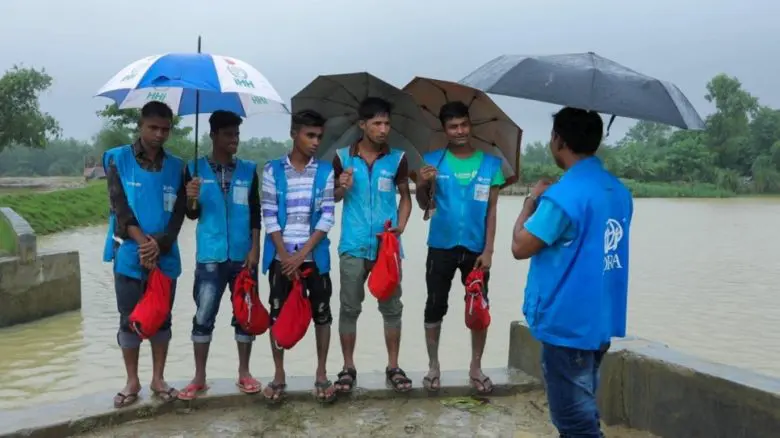
Rohingya refugee volunteers shortly after rescuing a teenager from a reservoir in Nayapara refugee camp. © UNHCR/Kamrul Hasan
During monsoon season, he helped other refugee volunteers save a young boy who was drowning in a reservoir. “When I looked out, it seemed like someone was sinking in the reservoir. I immediately shouted for other volunteers on duty to come and help,” says Hossain.
Together with his colleagues, they were able to pull the child out of the water, resuscitate him and pack him off to the hospital for treatment. With his first aid and water safety training, Hossain plays a vital role in keeping his community safe.
In preparation for monsoon season, UNHCR distributed tie-down kits to nearly 40,000 households to help reinforce shelters. As well, UNHCR is positioning relief items in camps, moving refugees out of high-risk areas, fortifying infrastructure, providing life-saving water safety and emergency response training and raising awareness about the extreme weather.
As part of UNHCR’s emergency preparedness and response efforts, staff continue to work to make sure that the most vulnerable (elderly refugees or those with specifics needs) are adequately protected.
Ways to help Rohingya Refugees
There are many ways you can help Rohingya refugees as they endure monsoon season. You can donate $92 to help provide shelter kits for Rohingya refugees including items such as bamboo kits, tarpaulins and sleeping mats to help reinforce shelters ahead of monsoon season.
You can also start a fundraiser to encourage family or friends to help. If you aim to raise $1,000, you can support the renovation and maintenance of a temporary classroom for Rohingya children in Bangladesh. If you’d like to help raise awareness, share this blog post on social media or sign up for our mailing list to stay informed.



